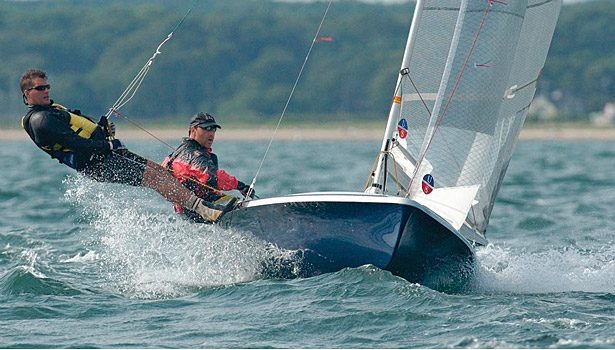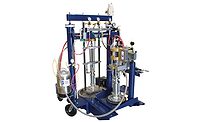Composite parts require the right adhesive to achieve optimum performance.
Westech Aerosol Corp. takes great pride in its “boutique” approach to making aerosol adhesive products for specific applications. For years, the company has supplied a wide range of general-purpose adhesives for basic construction applications. In 2005, however, the company’s founder, David Carnahan, Ph.D., discovered that general-purpose adhesives could pose a significant risk when used to manufacture component precision parts for cars and trucks, aerospace and aircraft, boats, wind turbines, and many other demanding applications. He discovered a missing ingredient that turned a general-purpose adhesive into something that crosslinked with the fibers and resins used in making the composite parts.
The new adhesive* is specifically designed for the vacuum infusion process, which is being used in an ever-increasing number of applications that demand high-quality composite parts and structures. It is critical to understand that general-purpose adhesives are neither designed nor appropriate for use in the vacuum infusion process. Also significant is that contaminants found in general-purpose adhesives can act as a “release agent” between layers of composites, keeping them from bonding properly.
*InfuZene®
COMPOSITE CHALLENGES
In the vacuum infusion process, layers of various fiber materials are stacked within a large bag inside the part’s mold, and a catalyzed resin is injected as the air is pumped out. Before injecting the resin, however, these layers must be secured to each other because the molds are often shaped with complex horizontal and vertical curvatures. Without an efficient adhesive, the fibers simply won’t conform to the surfaces of a complex mold. Composite manufacturers sometimes use general-purpose adhesives to keep these layers together. Once the resin cures, the bag is unsealed and manufacturers can only hope that a strong and durable part is produced. Unfortunately, a general-purpose adhesive can actually hinder the resin curing process and leave behind small, but significant faults in the finished product, resulting in strength-reducing voids or osmotic blisters.
Composite manufacturers make a wide range of products but some of these products are expensive and failure-intolerant, like luxury yachts. Imagine the pain of watching a multi-million-dollar investment sink because a general adhesive actually hindered the resin curing process by leaving a small but significant weakness in the finished product. Or imagine spending $150,000 for the components of a high-performance composite aircraft, as well as investing 2,000-4,000 hours of build labor, only to find that the aircraft has serious structural problems.
In many layered composites, such as racing car chassis or yacht hulls, the structural risk can be particularly insidious if these weaknesses occur within the internal layers, hidden from view and from many inspection technologies. This can potentially lead to catastrophic failure in mission-critical and/or high-performance applications.
With the increasing use of composite structures in aircraft, the U.S. Federal Aviation Administration is imposing ever-tightening regulations governing the use of these structures. In sanctioned automobile racing, organizations such as IndyCar are also requiring safer composite structures to increase driver safety. In addition, regulations are being implemented in many forms of marine competition to ensure the durability and safety of high-performance sailing and powered craft.
Composite manufacturers have myriad factors to consider when ramping up to make a new part. The molds themselves can cost hundreds of thousands of dollars. Machinery and equipment investments dwarf the miniscule costs of the remarkably small amount of adhesive used in the vacuum infusion process. The amazing reality, however, is that the use of a specialized crosslinking adhesive might not just save the manufacturer from costly defects, it may be the one ingredient that ultimately defines their product as superior to all others.
SPECIALIZED CROSSLINKING ADHESIVE
Solvent-based adhesives perform differently and are used for applications, such as vacuum infusion, where water-based adhesives are incompatible with the un-catalyzed resin that infuses the layers of fiber. The type of solvent used is critical because the entire purpose of the solvent is to dissolve and interact with the monomers (e.g., rubbers and resins) that are added to make the adhesive tacky and durable in terms of a permanent bond between the medium material and its substrate.
Selecting the right combination of solvent and monomers is critical. Out of hundreds—perhaps thousands—of varied monomers that are used in making adhesives, Westech discovered and patented the particular combination used to make its new formulation. The critical factor is this unique combination’s ability to accomplish two important functions for the composite manufacturer.
A crosslinking adhesive has the necessary tack to hold fibers in place while allowing some position adjustment before setting. Unlike general-purpose adhesives, it will dissolve thoroughly into the catalyzed resin that is injected into the mold under vacuum. Dissolving eliminates the chance that glue residue remains behind in the infusion process. Imagine what adhesive residue would do if it remained as a surface blemish on the surface of a new product, like a new Corvette hood, or if it left a rough surface on a wind turbine blade, thereby compromising its aerodynamic efficiency.
Specialized adhesives, however, do far more than simply dissolve away and disappear. The adhesive’s combination of monomers, when in reaction with the infusion of the catalyzed resin, helps create a chain reaction where free radical monomers bond or crosslink with the resin. This results in a final part that is far stronger than parts made with a general-purpose adhesive. The end result is a strong multi-dimensional bond at the molecular level. The strength of this bond is exactly why composite manufacturers must pay close attention to the selection of the appropriate adhesive product.
Technically, a crosslinking adhesive is not a spray adhesive as much as it is a resin stabilizer that allows the resins to reach maximum peel and tensile shear strength. In recent tests conducted by a respected independent university, results indicated that vacuum infusion-enabling adhesives provided a stronger bond in the vacuum infusion process than the leading general-purpose spray adhesive. Based on ASTM 2344 short beam shear strength testing standards, results indicated that these products can provide up to 30% more in interlaminar shear strength than the sample composite built using the leading alternative product.
For more information, contact Westech Aerosol Corp. at 5405 Constance Dr. SW, Bremerton, WA 98312; phone (877) 674-2010; or visit www.ok2spray.com.


